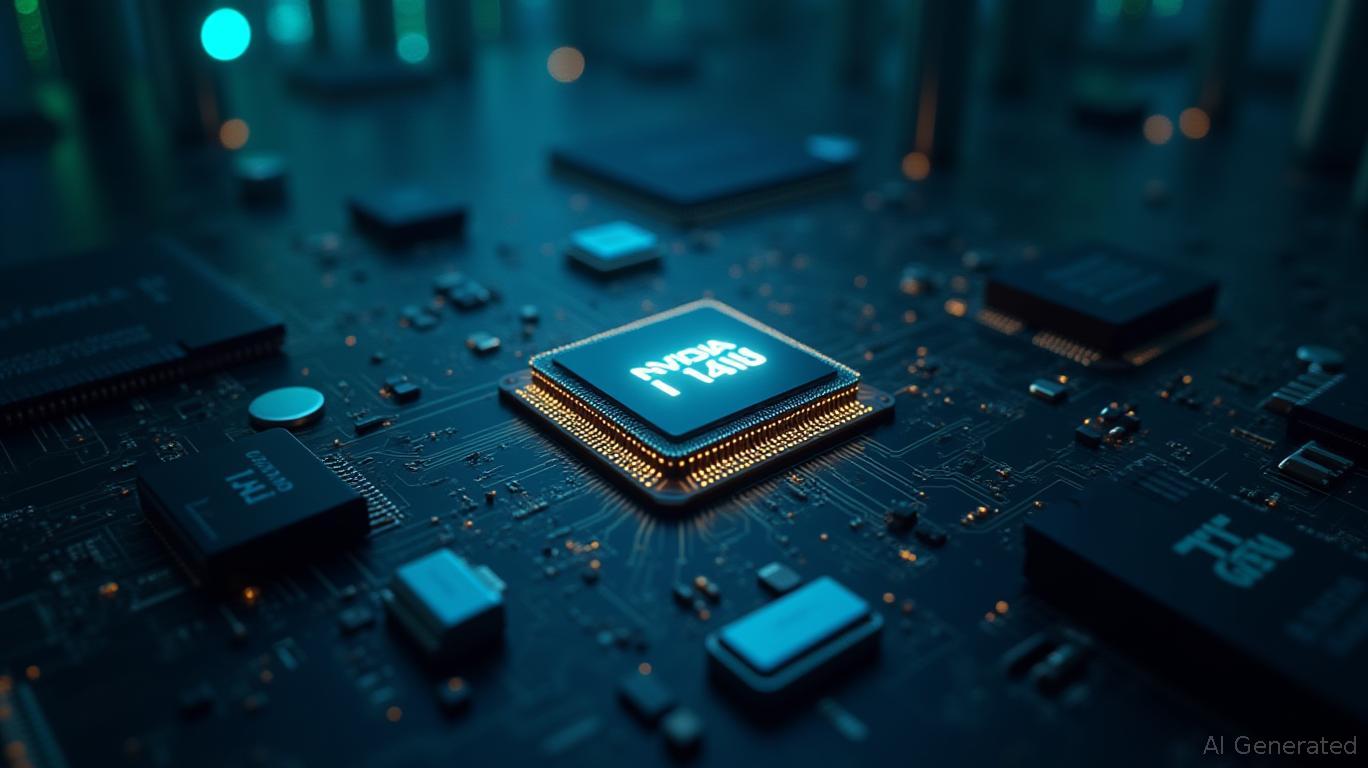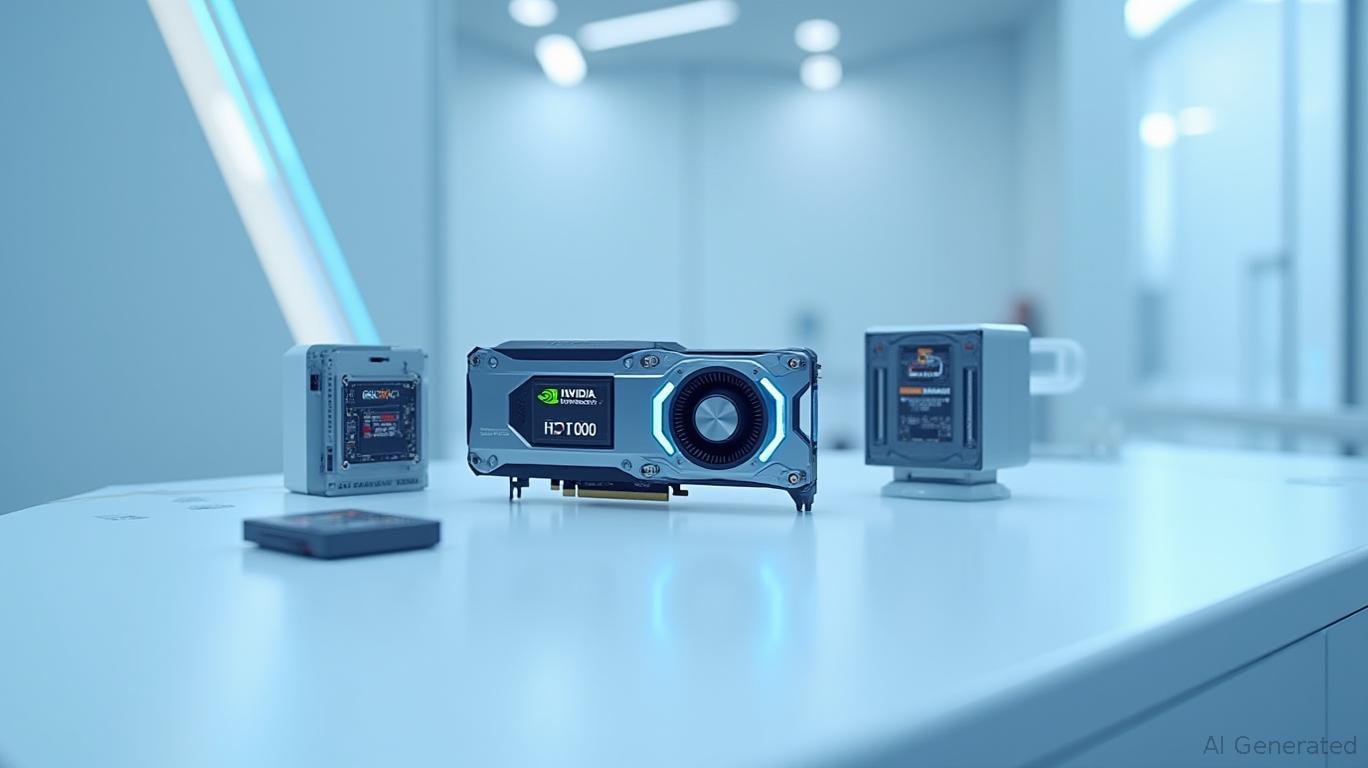NVIDIA's Crossroads: Can AI Capex Uncertainty Derail the Chip Giant?
The semiconductor industry’s golden age of AI-driven growth may be showing cracks. NVIDIA (NASDAQ: NVDA), the undisputed leader in AI chips, has seen its stock price target slashed to $125 by multiple analysts in early 2025—a stark contrast to the $200+ optimism of just 18 months ago. The downgrade reflects mounting concerns over China’s restricted access to its cutting-edge chips, intensifying competition, and doubts about the longevity of AI capital expenditure (Capex) demand. For investors, the question is whether these headwinds signal a structural decline or a temporary stumble.

The China Factor: Export Bans and Write-Offs
The immediate catalyst for the price target cuts is U.S. export restrictions on NVIDIA’s H20 and H100 chips to China. These rules, tightened in early 2025, bar the sale of chips capable of accelerating AI training and inference beyond certain performance thresholds. The impact is profound: China accounts for roughly 25% of NVIDIA’s enterprise hardware sales, and its hyperscalers like Alibaba and Tencent are among the world’s largest buyers of AI infrastructure.
Analysts at Bank of America estimate that the restrictions could force a $5.5 billion write-off in 2025, primarily tied to unsellable inventory and stranded investments in China-specific chip variants. Even with workarounds—such as using older A800/H800 models—the long-term risk is a shift toward alternatives like AMD’s MI300X or homegrown Chinese chips like Baidu’s Kunlun.
Margin Pressure and the "Magnificent Seven" Threat
Beyond geopolitics, NVIDIA faces a structural challenge: its gross margins are eroding. From 78.4% in Q1 2025 to a projected 70.6% in Q1 2026, the decline underscores rising competition. Hyperscalers such as Google, Amazon, and Microsoft—the so-called “Magnificent Seven”—are now designing their own AI accelerators to reduce reliance on NVIDIA. These in-house chips, while less powerful, are cheaper and avoid supply bottlenecks.
Analyst Vivek Arya of Bank of America notes that this self-sufficiency trend could reduce NVIDIA’s pricing power by 10-15% over the next three years. Meanwhile, rivals like AMD and Intel are closing the performance gap, with AMD’s MI300X already adopted by Microsoft for Azure’s AI workloads.
The AI Capex Conundrum: Software Efficiency and ROI
The most existential threat, however, is the slowdown in AI Capex demand itself. Innovations like DeepSeek’s open-source models and advanced software optimizations are reducing the need for cutting-edge GPUs. A single $50,000 NVIDIA DGX system, once critical for training models, may now be replaced by a mix of older hardware and cost-effective open-source tools.
Morningstar analysts argue that businesses have yet to prove a consistent ROI from AI investments, with many projects still in pilot phases. If these pilots fail to deliver tangible results, companies may curb spending. “The market is pricing in very high uncertainty,” says Morningstar’s Sam Peter, who lowered NVIDIA’s fair value to $125.
Data-Driven Outlook: Near-Term Strength vs. Long-Term Risks
Despite these headwinds, near-term optimism persists. NVIDIA’s 2025 revenue is still expected to grow, buoyed by production capacity for its Blackwell and Vera Rubin architectures. Analyst consensus (per MarketBeat) remains at $165, assuming a 2026 rebound.
But beyond 2025, risks loom large. Barclays’ Tom O’Malley warns that if hyperscalers like Meta or Google slow Capex due to efficiency gains, NVIDIA’s growth could stall. The company’s Vera Rubin chips, while powerful, face diminishing returns in compute improvements—a trend that reduces urgency for upgrades.
Conclusion: A Leader in Transition
NVIDIA’s $125 price target reflects a recalibration of expectations, not a death knell. The company remains the gold standard for AI hardware, and its software stack (e.g., CUDA) and ecosystem dominance are formidable barriers to entry. However, the structural shifts—geopolitical fragmentation, self-sufficiency among clients, and software-driven efficiency—suggest its growth rate will slow.
The critical question is whether these trends are cyclical or secular. If AI adoption plateaus or shifts toward open-source solutions, NVIDIA’s reliance on Capex-driven sales becomes a vulnerability. Conversely, if the AI revolution sustains its momentum and geopolitical tensions ease, the $165 consensus may prove reasonable.
For now, the data points to caution. With margins falling, competition rising, and $5.5 billion in write-offs already priced in, investors must weigh NVIDIA’s near-term resilience against the long tail of uncertainty. The chip giant’s journey from $200 to $125 underscores a broader truth: in the AI race, no leader can afford to stand still.










